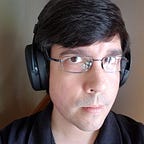Obsidian’s action RPG The Outer Worlds first launched last year on the Xbox One, PC, and PS4. It was a generally beloved thing that really wanted you to know that it was from some of the minds behind the original Fallout games and also Fallout: New Vegas. Although it looks like a Bethesda game on the surface, with its blend of mechanically heavy first-person combat and menu-driven dialogue sequences, its much tighter scope and scale also fondly reminds me of the original Mass Effect.
It was one of my favorite games of 2019, and I was pretty excited when the Nintendo Switch port was announced. It was developed by Virtuous, a large collection of satellite studios with extensive porting and development support experience. It sells for $60, which I happily paid on launch day and maybe should have reconsidered. Virtuous made the recent excellent BioShock collection ports on Switch, and when I saw how well those ran, my hopes were high for The Outer Worlds in spite of its bigger memory footprint and Unreal Engine 4-powered visuals.
